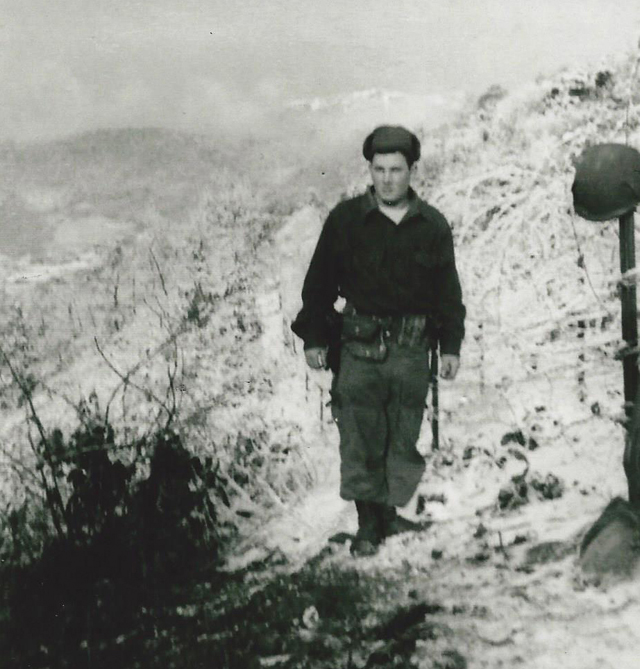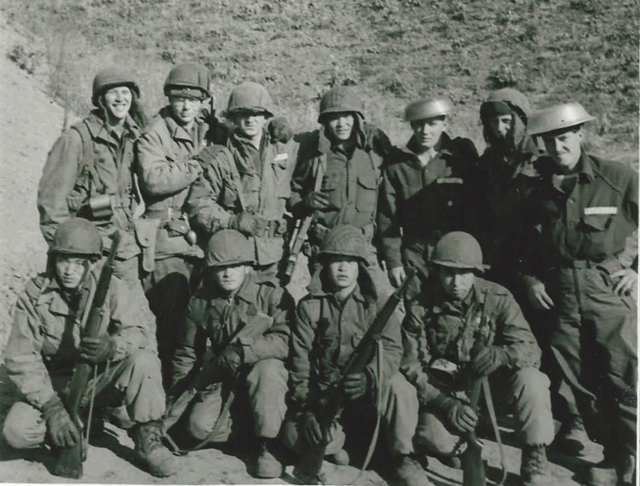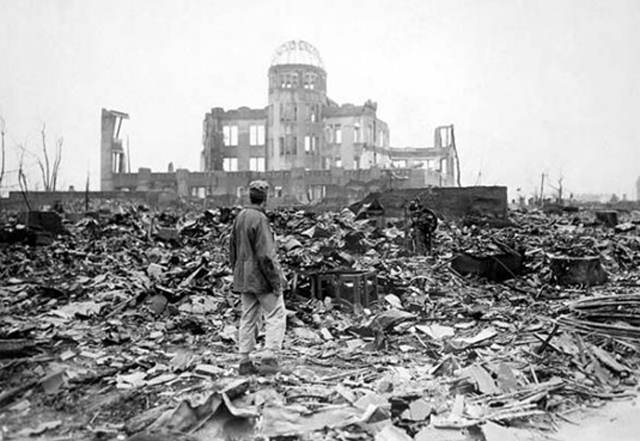| Fred
Seubert to receive VFW Lifetime Achievement Award
Fred “Fritz” Seubert was born Christmas Eve, 1931 in Cottonwood, Idaho. He was a great local young man who showed exceptional values. He graduated high school in 1950, and went to work for Haener Lumber Company. Two years later, he was drafted by the US Army into the Korean War, on December 10, 1952. He attended basic training at Camp Roberts, California. Fred had four brothers, who also served: Morris Seubert US Navy WWII, George Seubert US Army Berlin Airlift, Tom Seubert US Army in Germany, and JP Seubert US Army National Guard between the Korean and Vietnam wars. After basic training he boarded a troop ship and went to Ita Jima, Japan, where he trained as an Army Medic. The Ita Jima training facility was a Japanese officer training base before the United States occupation following the surrender of the Japanese, ending World War II. One Sunday afternoon, Fred boarded a barge going to view the devastation of Hiroshima from the atomic bomb, “Little Boy,” dropped on August 6, 1945. Following training at Ita Jima, Fred was sent to Pusan, Korea in 1953. Shortly thereafter, he was assigned as a medic to the 35th Regiment, 25th Division, Mike Company, a front line machine gun combat unit serving north of the 38th Parallel. Riding north on a train powered by steam, he was warned to watch for Chinese soldiers attempting to throw grenades inside the train. Fred wasn’t sure if this was true, or just a tactic to scare the hell out of the “new-guy.” Several rather sobering accounts from Fred’s combat service include some things he said weren’t covered during basic training. Fred said, “you can hear enemy mortar rounds coming before impact,” and pray you are not at ground zero. On a few occasions they armed him with a shot gun, loaded with double zero buck shot, used for close-in combat. He never received training with this weapon, but found himself faced with it on the field of battle. Curiously, shotguns were normally used to arm a soldier in the back of a jeep. The front seats had the driver and an officer; however, the soldier in the back was said to be “riding shotgun.” So, now you know where that cliché originated! Fred became accustomed to the incredibly loud Air Force F-100s, strafing the trails in advance of his unit. However, it was quite a surprise once in a while when planes resembling Piper Cub, fabric wing US surveillance aircraft flew ahead of troop movements taking all kinds of ground fire and flack. The planes would fly ahead, photographing enemy positions, but once the flack exploded near the planes, they turned quickly back towards Fred’s protected position and the protection his artillery unit provided. Fred said, “the F-100s, and 81mm mortars were loud, but nothing compared to our own unit’s tanks.” When the tanks revealed themselves to fire a volley over Fred’s position, the earth rattled with thunderous violence! At one point his unit came upon a crashed US Navy Hellcat, stuck in the ground, nearly vertical, with its 30mm guns stuck in the earth. They had no idea of the fate of the pilot. The pilot was not in the wreckage. Fred’s unit often came under heavy enemy fire because their 13mm light and water cooled machine gun belts were loaded with tracer rounds every five shells, giving away the positions of their makeshift trenches and bunkers. It was difficult to gain any continuity in the ranks because the old-timers frequently rotated back home and were replaced with newer, less experienced recruits. It was a hellish environment, but Fred knew he was serving a noble cause. He watched the three Republic of Korea (ROK) soldiers serving with his unit. The look on their faces was all the inspiration he needed to press on. He earned the rank of Sergeant, and was awarded the Combat Medic Badge, among others before his discharge from the Army. Fred served honorably, returning home a hero after his discharge on July 15, 1954. Fred returned home to work his passion, lumber and construction. He made a successful life back home in Cottonwood, on the scenic Camas Prairie in north central Idaho. Immediately upon his return home, he began serving as an honor guard member. Fred joined the VFW in 1959, beginning a lifelong commitment to serving his fellow veterans, community, and nation. In addition to serving the VFW, Fred has commanded the Cottonwood American Legion Post over two decades. He performs the daunting task of maintaining the American Legion Post building, a dual-role facility serving the American Legion and the Richard Jacobs VFW Post 4902. Over the years, he completed many upgrades and repairs to the aging facility. Most recently, Fred helped other VFW and Legion members remove the old outer-wall coverings, repaired water damage from roof leaks, hung new siding, and painted the outside of the building. He served the past five decades on the combined VFW & American Legion honor guard. Fred cannot count the number of veteran’s funeral flags he folded over the years, but estimates it somewhere near 40. In 1965, Fred attended the wedding of friends, Ralph & Marie Sprute. At their wedding he met Ellen Jones from Missoula, Montana, and was smitten. One year and one day later, he and Ellen married on September 17, 1966. Ellen fully supports Fred’s active participation in the Veterans of Foreign Wars and the American Legion. She attended countless functions, dinners, and spent hours ironing, starching, and pressing Fred’s uniform over the past fifty years. Fred supports the VFW with a zeal and dedication unheard of and rarely seen. His five decades of service are the benchmark for others to achieve. Fred’s legacy of service is admirable and deserving of the Lifetime Achievement Award, and his service to the VFW, his community, and the United States of America continues today! 
Fred Seubert in Korea in the 1950’s. 
Fred Seubert attended medic training at this facility at Ito Jima, Japan. Prior to the Japanese surrender, Ito Jima was a Japanese Naval Officer training facility. 
Fred Seubert, back row, third from right, is pictured with 3 Korean soldiers and members of the 35th Regiment in Korea in 1953. 
Fred Seubert was taken to Hiroshima, Japan, to view the damage left behind by the dropping of the first of two atomic bombs that brought an end to World War II, forcing Japanese surrender. |
|